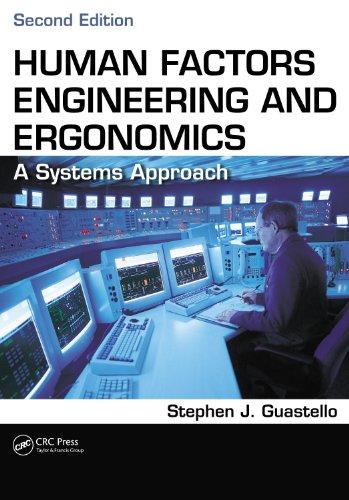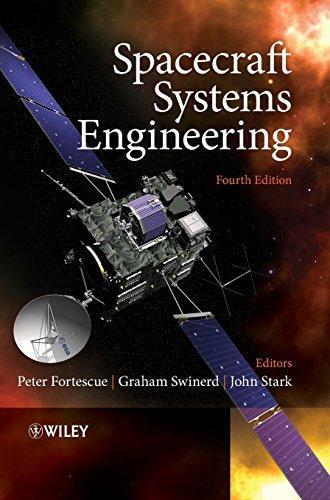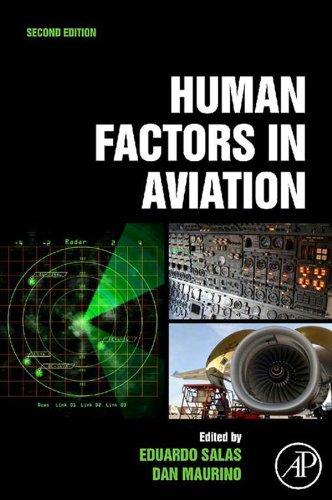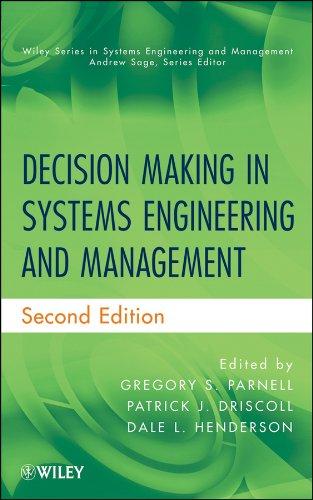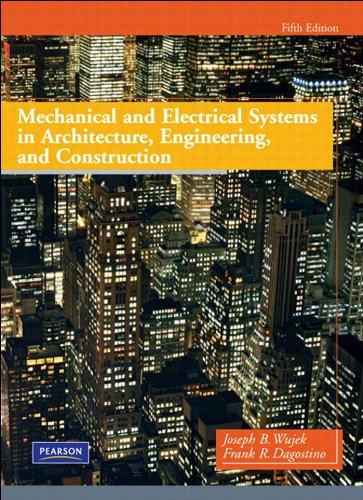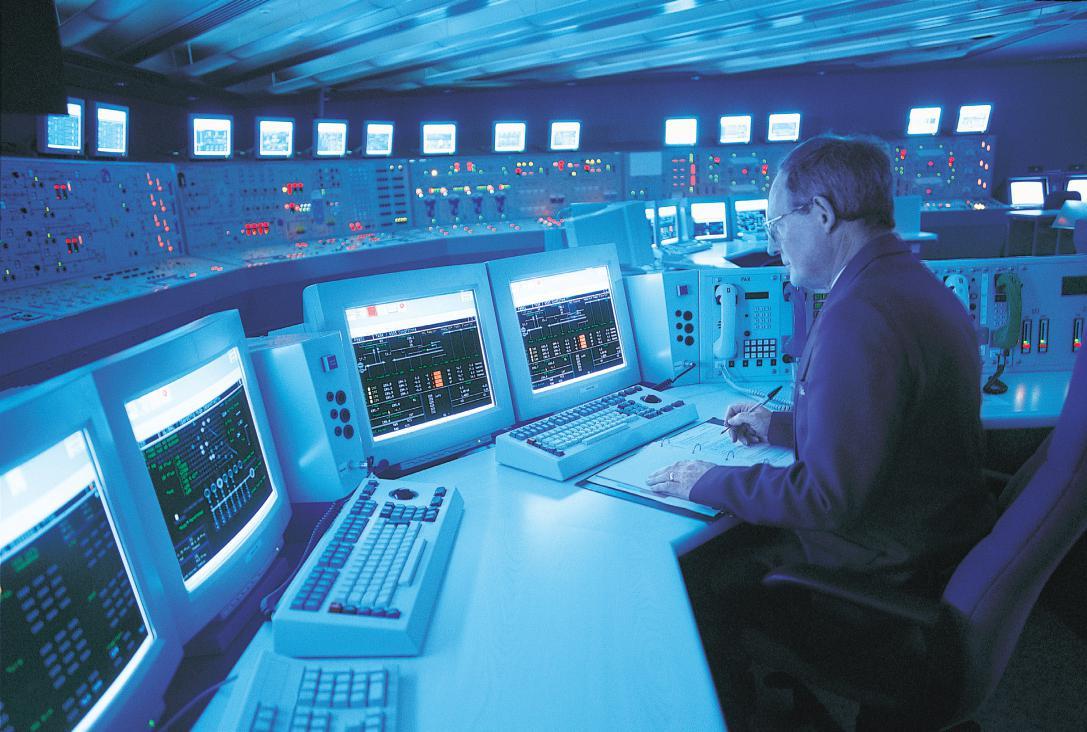HUMAN FACTORS ENGINEERING AND ERGONOMICS
A Systems Approach
Stephen J. Guastello
Preface
This textbook is the outgrowth of teaching human factors engineering for 30 years to undergraduates. The course is an offering of the psychology department, just as it was decades ago when I was a student myself. The field of human factors psychology (or human factors engineering, or engineering psychology) has changed markedly during that time. Although it still stays true to its original concerns about the person–machine interface, it has expanded to include new developments in stress research, accident analysis and prevention, and nonlinear dynamic systems theory (how systems change over time), and some aspects of human group dynamics and environmental psychology. Computer technology has permeated every aspect of the human–machine system, and has only become more ubiquitous since the previous edition. The systems are becoming more complex, thus theories need to evolve to cope with the new sources of complexity.
It has been a challenge to find a textbook for the class under these conditions of technological change. At first, I found one that seemed just perfect with regard to the breadth and depth of coverage I was looking for. After a few years it only needed a supplementary reading or two to help out, but eventually it went out of print, never to return. The other textbook choices by that time had diverged greatly in how they characterized the scope of the field. One approach concentrated on tables and graphs for otherwise traditional topics. A second approach retrenched into the theories of cognitive psychology and focused less on the practical problems in human factors. Meanwhile, library shelves were filling up with books on human–computer interaction that were becoming progressively more dissociated from the core concepts of the human–machine interface. The fast pace of technological change did not help any textbook writer who had a mind to identify and extract the fundamental principles of the subject area.
In any case, I hereby present to you the new scope of the psychology of human–machine interaction. The typical roomful of students that I have in mind is usually composed of upper division students and a few graduate students. The class is typically composed of 60% engineering students of different sorts, 35% psychology students, and 5% sundry others. One implicit goal of the course is for the engineers to think more like psychologists, and the psychologists to think more like engineers. The sundry others usually show signs of thinking like both, and make the class situation more interesting for everyone.
I would like to take this opportunity to thank Joseph J. Jacobsen for helping to arrange some of the photographic opportunities that appear throughout this book.
New to This Edition
There are several new developments in this second edition, some of which span multiple chapters. Some of the more extensive areas of expansion include the following.
In earlier times, the allocation of functions between person and machine was a fairly straightforward separation of labor. Augmented cognition and automation are blurring this distinction, and the current thinking is that machines can adapt their functions when they detect that the operator is under stress. How does the machine make that determination? Is part of the stress related to the human not trusting the machine? The issues are first addressed in Chapter 2, but become more complex as the book unfolds.
The role of nonlinear dynamics in person–machine systems has grown as interest in how systems change over time has increased. The newest developments involve events that synchronize or emerge suddenly, apparently out of nowhere. The basic principles that are relevant to human factors have been expanded in Chapter 2, with specific applications to stress and human performance, occupational accidents and prevention, and complex systems in later chapters.
The design of visual displays has always been a staple topic in human factors. The latest innovations draw on evolving principles of iconography and synthetic vision systems. Although it was tempting to include them in the chapter on visual displays, they appear in the chapter on human–computer interaction where they build on some intervening material.
The chapter on cognition has changed substantially in light of developments that have consolidated in several theoretical areas. Look for resource competition theory, recognitionprimed decision making, working memory, degrees of freedom in cognitive processes and psychomotor control, dynamic decisions, task switching and interruptions, subjective ratings of cognitive workload, and situation awareness. Navigation in real-world environments is also new to the chapter on environments.
New directions in psychomotor control are combining system control with the understanding of neural mechanisms that produce the behaviors. The practical objectives often surface in robotic components and designs for prostheses that can be controlled by human thought the way normal limbs are controlled.
There is a growing concern in society about cognitive workload and fatigue as more people find that they have too much to do, not enough time to do it in, and automation, which they do not necessarily trust, is making their work more mentally intensive. Long working hours can be hazardous. The effects of cognitive workload and fatigue have been historically difficult to separate because they both produce negative effects on performance over time, while other processes that transpire over time serve to improve performance. It is now possible to separate these effects with nonlinear models and experimental designs that capture all the ingredients of the models. Whereas systems have been traditionally designed to minimize the role of individual differences in cognition and personality, and with good reason, individual differences in cognitive responses to systems are now gaining importance.
New developments in accident analysis and prevention consist of a better understanding of the social context in which safety and risk occur. There has also been a recent shift in orientation from explaining what happened to a proactive orientation to anticipating what could occur. This is the principle of system resilience that takes on a few different forms and
is informed by nonlinear dynamics and complex systems theory. Another distinctive feature of the accident chapter is that the catalog of interventions for occupational safety has been updated. Once again, a comprehensive ergonomics approach to intervention offers some of the largest improvements in accident reduction.
Artificial intelligence was once the label given to computer programs that emulated human thought processes. The programs have now expanded to include knowledge discovery that is more independent of human control than ever before and to manage and manipulate huge databases that never used to exist. It is left to the reader to ponder whether we are reaching a turning point where the machines will control humans more so than the other way around.
Complex systems applications in human factors and ergonomics are becoming more common. The broadest new developments here include network theory, human collective intelligence, and how to control your very own fleet of robots or drone surveillance aircraft. The chapter also considers scenarios in which multiple integrated autonomous systems can go out of control.
Author
Stephen J. Guastello is a professor of psychology at Marquette University, Milwaukee, Wisconsin, where he specializes in human factors engineering and organizational behavior. He was a pioneer in the applications of nonlinear dynamic systems theory to psychology and in the development of statistical analyses for behavioral science data. He is currently researching nonlinear processes in cognitive workload and fatigue and sees human factors and ergonomics as ripe with new possibilities for complex systems analyses. Professor Guastello earned his PhD in industrial/organizational psychology from the Illinois Institute of Technology and BA degree in psychology from the Johns Hopkins University.
Some of his more extensive consultancies include human–computer interaction and expert systems for power plants and other applications, accident analysis and prevention, and the usability of prostheses. He has authored two previous books, Chaos, Catastrophe, and Human Affairs (1995, Erlbaum/Taylor & Francis) and Managing Emergent Phenomena (2002, Erlbaum/Taylor & Francis), and coedited Chaos and Complexity in Psychology: The Theory of Nonlinear Dynamical Systems (with M. Koopmans and D. Pincus, 2009, Cambridge University Press) and Nonlinear Dynamical Systems Analysis for the Behavioral Sciences Using Real Data (with R. Gregson, 2011, CRC Press). He is the founding editor-in-chief of the quarterly research journal, Nonlinear Dynamics, Psychology, and Life Sciences, published by the Society for Chaos Theory in Psychology & Life Sciences.
Introduction to Human Factors and Ergonomics
Ever since prehistoric times, Homo sapiens made tools to enhance their physical capabilities and to channel their physical energy. Eventually, they developed tools to enhance mental capabilities and channel mental energy as well. The first tools were handheld devices, such as hammers and cutting edges. The first machines such as notably wheels, levers, and pulleys channeled physical forces as well as human forces.
The industrial revolution, which started by some accounts in the late 17th century, benefited from major developments in the science of mechanical physics. Sir Isaac Newton is historically recognized for introducing the concept of a mechanical system. A system has parts that all work together to fulfill an objective. If we know how each of the parts work, we can know how the entire system works. This particular assumption produced clocks, clockwork-type machinery, and myriad devices that, once the human operator set them in motion, continued their function until completion. Machines such as the cotton gin and textile weavers started to replace the work previously done by people; we recognize the phenomenon as automation.
The advent of machine tools in the 19th century made it possible to produce hundreds or thousands of objects that looked and functioned exactly alike. If a product were to be assembled from many elementary machine-tooled objects, the product could now have interchangeable parts. Hence, there was now the potential for assembly line production systems.
Electricity was another landmark in tool making. It greatly expanded the number and type of tools and machines that could be made and reduced the amount of human energy required to make the production system work. The number of tools and products that depend on electricity today are uncountable. Before taking the ubiquity and inevitability of electricity for granted, however, it is important to remember that entire empires were built without it. There are still places in the inhabited world where electrical service is only available for 1 hr a day.
Communication devices have changed not only our way of life, but also our concept of who we are and how we are connected to other people. In primitive times we chiseled a piece of rock or scratched on a piece of papyrus. Writing and writing media were memory-enhancement devices at both the individual and collective levels of experience. Not only could the writers enhance their own memories, but they could also share them with anyone else who found the writing even after the original writer had died.
Books of memories were produced eventually, but until the invention of the printing press in the late 15th century each book had to be copied accurately by hand. The type for the print still had to be set by hand until the late 19th century, but the printing press was a major leap forward for automating the process and disseminating the information. In the same historical epoch, electricity was combined with communication goals to produce the telegraph, telephone, radio, and television later on; these devices allowed us to send messages over great distances (and eventually the entire world) in relatively short amounts of time. Other technical advances allowed the possibility of recorded sound and its automated production once the record master was available in 1916. Photography displaced
the painter as the sole provider of realistic renditions of visual events. Photographs were combined with a hand-cranked machine to produce a movie; eventually, a motor replaced the crank. The communication devices were not only tools of communication, but they also became media of expression.
Transportation devices, especially the aircraft of the later 20th century, allowed us to move our entire bodies around the world in ways never before possible. Space travel has started to liberate us from one particular world, although the other nearby worlds tend to be cold and nasty. If people were meant to fly, they would need to build a really good set of wings and learn how to use them.
The earliest ancestor that resembles the device we know today as the computer was introduced in the late 1940s. The capabilities of the earliest versions of the machine were confined to rapid and accurate calculations, which were of course highly desirable. Other types of thinking processes were introduced into its programming in the years that followed, along with simplicity of use. Desktop models for individual owners appeared in the 1980s. The 1990s saw larger data storage and memory capacities, faster processing, and briefcase-sized models. Since then, computer-related technologies have been incorporated into virtually every machine of contemporary design. In some cases, a desktop computer acts as the controller for a complex electromechanical system.
Although the foundations of the shift were forming earlier, the prototype device we call “the computer” has become intertwined in every communications system available, short of talking, paper, pencil, and those who have kept the art of chiseling rocks alive. Actually, the ubiquity of e-mail, cell phones, and text messaging almost appear to preempt real faceto-face relationships and replace paper-based objects and activities with those that are plugged into an energy source and an information network. Can people do anything anymore without a computer-based device becoming involved? This question extends to simple arithmetic and walking across the street. The information technology industries have tacitly answered, “not if we can help it,” and call what they do “ubiquitous computing.”
Computers differ from conventional machines because they are programmable. Programming allows people to change the function of a machine in ways never before seen since the introduction of machines. Not only does the computer enhance human cognitive processes, it can substitute artificial skill for real skill, alter our concepts of ourselves as social beings, and create artificial psychological realities through particular combinations of programming capabilities; the more advanced combinations are called “virtual reality.” All of these developments led Turkle (1984) to refer to the computer as The Second Self, to emphasize that this class of machines has affected our concept of who we are more so than any other technological advance. Thirty years later, the computer is more of the same.
Entry of Human Factors and Ergonomics
The complexity of machines is obviously growing, as are the demands on the user to operate them. Machines are only as effective as their operation by humans allows, and thus, there are opportunities and challenges that lie at the interface between the person and the machine. The setting in which the machine is used, the physical environment, other tasks underway, and other people and machines have a strong impact on the performance of the person–machine system (PMS).
Person–Machine System
Meister (1977) emphasized the concept of a system. A system has elements that interact to produce a result that cannot be reduced to, or understood as, the simple outcome of one of the system elements. The primary elements, of course, are one person and one machine, but person–machine systems can vary in size and complexity.
The person and the machine exert a close control over each other within the system. The point of control occurs at the interface, which is most often a control and display panel of some sort. Although Meister (1977) conceptualized the person–machine system as only containing those elements or people that have direct control over the machines, ergonomic science in later years recognized less direct sources of system control that do in fact affect the interactions at the interface.
The machine should be capable of carrying out functions automatically once the human has activated it. If not, then we have a tool rather than a machine. Both tools and machines are important to human factors engineering or ergonomics nonetheless.
Cognitive Core
The field of human factors engineering (HFE) started in the 1940s as a joint effort between psychologists and engineers (Chapanis, 1975). Their overarching goal was to study the interactions that occur at the human–machine interface. They studied practical questions such as, “Why did a seemingly competent cockpit crew fly their aircraft into a mountain?,” “How could the chemical tragedy in Bhopol, India, ever happen?,” or perhaps more mundanely, “Why are people having such a hard time operating our software?”
Figure 1.1 depicts the traditional scope of HFE. The human interacted closely with the machine. The information provided by the machine to the human is a display. The information given to the machine by the human is a control. Three groups of cognitive psychology topics that were immediately invoked were perception, psychomotor skill, and principles of cognition. (In the early days, cognitive science was not yet defined as a discipline.) Theories of perception explained how the human assimilated the display. Psychomotor studies explained how the person managed to control the machine effectively. Cognition theories explained what transpired between the human’s ears between the moment of
FIGURE 1.1
display and the moment of control. The overriding objectives were, and continue to be, the optimization of system performance and the minimization of human or system errors.
Chapter 2 covers a set of concepts that are pertinent to most any human factors initiative. Who is the user of a system? What composes the system? How do we allocate functions between people and machines? When are redundancies in function relevant? What is information and how does it flow? How do system events change over time? How do we assess the functionality of the system?
Chapter 3, on psychophysics, is actually about the interface between people and their real worlds. It explains how people detect a physical stimulus—sound, sight, vibration, and so on—and how to characterize simple decisions that are made on the basis of the presence or absence of stimuli. There are stimulus detection problems that are not nearly so simple, however.
Chapter 4 pertains to the processes of visual sensation and perception and their impact on the usability of visual displays. Chapter 5 pertains to auditory sensation, perception, and displays, and also includes the human interpretation of tactile information. These core topics have a long history in the field, and there are innovations to keep them exciting.
Chapter 6 delves into the cognitive processes that occur between the perception of a display and the moment of a control action. How did the human make the evaluation and decide what to do? The principles in this chapter are foundational to Chapter 12 on artificial intelligence. Chapter 7 describes controls, human response times, and related issues of human performance when operating machines.
Work-Space Shell
The subject matter of HFE expanded in the 1980s. The word ergonomics arrived from Europe. Initially it denoted the interaction between the human and the nonliving work environment, but today, ergonomics and HFE are interchangeable in meaning. Contemporary ergonomics is now conceptualized as “the design and engineering of human–machine systems for the purpose of enhancing human performance” (Karwowski, 2000, p. 1).
The expanded range of topics integrated well with another classic area in Chapter 8, anthropometry. Anthropometry, or human measurement, affected the design of hand tools, workspaces, driver, and passenger compartments of vehicles of all types, and requirements for human movement within workspaces. In this chapter we consider topics in human strength because of their proximity to other human-measurement concepts. Two regular topics of concern are the control of back injuries and carpal tunnel syndrome. Both are considered in Chapter 8, although the broader range of topics in biomechanics is beyond the scope of this text.
Figure 1.2 depicts the scope of HFE as it exists today. The immediate work environment surrounds the person–machine interface, which is in turn surrounded by environments of broader physical scale, known as microenvironments and macroenvironments. Kantowitz and Sorkin (1983) were among the first authors to expand the boundaries of HFE to these broader physical ranges.
Environments are sources of many forms of stress. Although the study of some types of stress and human performance is part of classical HFE and nearby areas of work psychology, the major thrust of the subject matter was not introduced until the 1980s. In a departure from the traditional impression that heat, cold, and noise are the primary stressors, some attention to the social origins of stress are given as well in Chapter 9 along with shift work, cognitive workload, and time pressure. Workload and fatigue effects have been historically very difficult to separate because they both occur simultaneously along with
other dynamics that improve performance over time. Progress has been made to separate them, however, using a mathematical modeling approach and experimental designs that are sufficiently complex.
We now arrive at the topic of accident analysis and prevention in Chapter 10. Accident analysis and prevention has an independent literature, which made use of ergonomics thinking only relatively recently. Traditional HFE appeared to regard the topic as another reason to control human error from the perspectives that it has always taken. Systems thinking promoted an integration of ergonomics, social dynamics, and management into new approaches to accident analysis and prevention in the workplace. Although this HFE text is not about business management in its usual scope, some aspects of management do play a serious role in accident analysis and prevention and ergonomics policy in work organizations, however. Also, cultures differ on their perceived importance of accident analysis and prevention relative to other economics objectives.
Computer
Human–computer interaction became an active area of study in the 1980s. The area requires a good deal of HFE and ergonomics thinking, especially since the influence of computer-based products has become widespread. Basic HFE concepts were still relevant to these new applications, but computer-based systems raised a number of new questions and issues. The development of computers in the next decades was the result of interplay between developments in programming capability and developments in cognitive science. Books on human–computer interaction and computer chapters in HFE books appeared but became obsolete quickly.
In this writer’s opinion, the developments in computer science have stabilized sufficiently, or at least have left a long enough trail, to prepare two chapters on computerrelevant themes. Chapter 11 covers input–output devices and virtual reality. Chapter 12 covers artificial intelligence, expert systems, and systems requiring massive computation components.
Chapter 13 pertains to complex systems that include but are not limited to complex human–computer systems. Two of its themes address the questions, “Why do attempts to improve or fix a system sometimes backfire and produce a situation that is worse than the previous one?” and “How do events in the system emerge that are not readily explained by events in their elementary parts?” Workgroup coordination, synchronization, and collective intelligence are also included in that chapter.
FIGURE 1.2
An expanded view of HFE.
Beyond the Great Outdoors
Chapter 14 considers environments that are larger in scale than the immediate work environment. Microenvironments would include private homes, offices containing several workspaces, or factory departments. Macroenvironments are substantially larger and more complex, such as entire factories, housing developments, airports, and even cities and the great outdoors. Where should we put the nuclear waste dump? How do we find our way out of the nuclear waste dump?
Human factors in outer space comprise the final saga of the text. This trajectory through the history of the U.S. space program will highlight HFE issues that emerged over the decades. Themes from prior chapters will converge here along with space-specific problems.
Broader Themes in the Text
Karwowski (2000) emphasized that ergonomics today requires a greater use of general theories than what used to be the case in previous eras. The subject matter of traditional HFE, when presented in its most traditional fashion, was composed of elementary facts and reference tables. Although the data- and event-driven approaches placed a strong emphasis on practicality, theory had to emerge from the bottom up to account for facts and allow for equally useful generalizations. As technologies evolve, one must approach new and untested technologies with a deeper understanding of the principles that might be involved. Some of the broader themes of this book are:
1. The human–machine interface is changing alongside the changes in the allocation of functions between person and machine. The tool that was under the continuous direct control of the human hand evolved into a machine. The machines evolved in their functions so that the primary point of contact with the human was at the interface where information was sent and received. Then, the interface became physically separated from the rest of the machine in many cases, and the boundaries between the control and the display merged together. Machines evolved beyond sending and receiving information; they started to pick up some of the thinking tasks as well. With virtual reality, the interface became an environment that surrounds the human; in other words, the human is in the machine. But why stop there? We can have machines carrying out their function from within the humans’ shirt pocket or from inside their bodies.
2. The needs of the system user affect optimal design in both broad and specific ways. Just because it is possible to make a machine, it does not follow that the machine is optimal in any particular way. Historically, it has been more often the case than not that the machine came first and the finesse of usability came much later. The introduction of a new display or control may have been a large step forward without much regard for how well the new feature was designed or positioned. Usability did matter eventually, however.
3. Systems behave over time. Thus, concepts from nonlinear dynamics, such as chaos, catastrophe, and self-organization, are relevant to the understanding of system performance over time, especially the complex systems. Nonlinear dynamic systems theory, which is first introduced in Chapter 2, clarifies that events do not
change smoothly over time, as the thinking behind common linear statistics might suggest. Rather, a small change in a system parameter could have a dramatic effect if it occurred at the right place and the right time. Similarly, a large change in a system parameter could have no discernible or permanent impact on the system’s output. Nonlinear dynamics also underlie emergent phenomena: system states that bear no visible similarity to previous states and that would appear to have come out of nowhere to the untrained eye. Within the nonlinear dynamics framework, it is processes that lead to emergent phenomena that put the “complex” into a complex system. Complex systems require more specialized analyses of system performance and human error potential compared with simpler systems.
4. HFE concepts are applicable anywhere, and nearly everywhere. Although elaborate commercial systems such as power plants and aircraft offer many opportunities for human factors investigations and thus receive a lot of attention, sophisticated technologies are inherent in contemporary household appliances. Do you know how to program your VCR or satellite download service to record a broadcast?
Criteria of Human Factors
Karwowski’s (2000, p. 1) definition logically applies to the entirety of the field: “the design and engineering of human–machine systems for the purpose of enhancing human performance.” The central criterion plays out in three forms: human performance itself, industry standards, and legal responsibility.
Performance Criteria
Performance criteria include maximizing output, minimizing error, ensuring safety, and devising training programs to meet these standards. These criteria are often interrelated. It is often possible to introduce a design idea that satisfies more than one objective. On the other hand, gains in speed might result in compromises in error rates or safety. Thus, it is well advised to consider multiple aspects of system performance when evaluating a design.
Output, from the standpoint of most human factors issues, is calibrated in terms of the amount of time required to produce a unit of work or a particular decision. Here we evaluate the ease of garnering relevant information from a display, making a decision, and executing the response.
Errors can be trivial or costly, depending on the situation. Managerial decisions often toggle between speeding production and compromising the quality of the product or the quality of work life (Borges & Guastello, 1998). The impact of errors can be a matter of degree—some of the more poignant examples considered in this text have resulted in deadly tragedies. Chapter 7 examines the speed-accuracy trade-off explicitly. Issues in quality of work life that translate in some of the sources of stress in the workplace are examined in Chapter 9.
Industry Standards
Various industries have at least some standards for equipment design. Human factors issues often fall outside the boundaries of many official regulations, but not in every
case (Karwowski, 2006). Standards have different levels of officiousness. A state of the art standard represents the most progressive idea that is publicly known. State of the art ideas might not have been thoroughly tested, and could easily be upstaged by an equally experimental new idea before the evaluation of the human factors is reasonably sufficient. State of the science standards reflect scientifically supported ideas that have a reasonable amount of generalizability. The state of the industry, however, is often slower than the state of the science to uptake the scientifically sound principles into practical systems. Old equipment that is still functional is not going to be discarded just for the sake of keeping up with trends. New purchase decisions, however, are likely to reflect the more progressive systems designs. Thus, within a particular industry one can anticipate a cascade of technologies.
Industry standards reflect the minimum acceptable design and performance standards in many cases. They usually adopt requirements that are least ambiguous in terms of their scientific support for their efficacy in system performance. Although industry standards per se do not have the force of law behind them, they often serve as reference points in civil liability litigation where the goal is to determine whether a design flaw was responsible for an injury or another form of damage. Representative of the industries themselves are usually part of the process of developing regulatory standards.
Regulatory standards have the force of law. As examples, the Federal Communications Commission sets standards for the quality of audio and video broadcasts and the technical systems by which the broadcasts will be made. The U.S. Department of Defense (DOD) sets standards for the human factors attributes of equipment purchased for the military. The standards are strongly influenced by the results of scientific contracts issued by the DOD. Any manufacturer desiring a military contract must meet those standards. Although DOD standards do not pertain to civilian products that are not purchased by the military, their information base might contribute some influential information to a civil litigation.
Another governmental nexus surrounds heath and safety. The Occupational Safety and Health Administration (OSHA) regulates safety in the workplace. The majority of its work since its inception in 1971 was restricted to employers’ use of equipment and supplies— electrical configurations, chemical handling safety, proper ventilation and exhaust, personal protection equipment, and so forth. OSHA also has standards for exposure to noise and excessive heat, which are two clearly ergonomic matters. In late 2000, Congress passed a law extending OSHA’s purview to several other ergonomic matters, but rescinded the law in early 2001. Since that time OSHA has served an informational and advisory role to employers on ergonomics matters. Although its primary function is setting standards, auditing, and enforcement, it now positions itself as a consulting resource to employers who wish to know more and take care of situations themselves. The National Institute of Occupational Safety and Health (NIOSH) is a research branch of OSHA. NIOSH commissions studies of situations and investigates the scientific side of new and emerging issues. NIOSH is currently part of the Centers for Disease Control and Prevention, which is concerned with public health issues outside the workplace as well as within it.
Civil Liability
The 50 states vary somewhat regarding their criterion for proving a case against a manufacturer or other defendant in a civil liability trial, but there are some common concepts nonetheless. They are strict liability, negligence, and contributory negligence.
Strict Liability
A legal theory of strict liability states that a manufacturer of a product is liable for damages connected to the product because the product is produced for profit. Here one might examine whether a human factors flaw could be detected from the product design, and whether such a flaw could have reasonably induced an error that led to the accident.
Dangerous products such as chainsaws are made and sold regularly of course. One suitable defense for the manufacturer is the obviousness of the danger. Is there any question about the function a chainsaw is supposed to serve and what the blades are for? Some dangers on other products are less obvious, however, and the burden of responsibility is on the manufacturer to provide suitable warnings and instructions for safe operation of the product. Appropriate warnings constitute another viable form of defense. One might then debate whether the warnings were in fact clear, informative, and relevant to the danger in question.
Contributory Negligence
In a defense of contributory negligence, the defendant argues that the plaintiff took actions that were irresponsible in some way. One example would be to use the product for a purpose for which it was not intended. A tale from the insurance industry captures the essence of improper use of a product. Several decades ago, a manufacturer of home washing machines designed a model with a glass top. The idea was that the happy housewife could watch the clothes go around without opening the lid. One proud owner, however, decided to dance on the lid of the washing machine. Unfortunately, she pounded her foot down too hard, it broke through the glass, and her leg was torn up by the washing mechanism. Although the manufacturer prevailed in this instance, they now had evidence that the glass lid might not be a good idea and pulled it off the market.
Another group of examples of contributory negligence would charge that the plaintiff ignored a warning. A third group might involve the plaintiff not attending to information on displays, taking an incorrect control action, or taking the action too soon or too late for the purpose. Human factors experts might be called in to determine whether it was reasonable to expect the operator of the device to see, hear, or do something differently that would have prevented the accident. All told, there are reasonable and unreasonable expectations from the human operator. Even a successful legal defense is costly, and designers are advised to idiot-proof their products to the extent humanly possible.
Negligence
A negligence suit is generally one that is aimed not at the manufacturer, but against a third party that might have provided a service or a piece of equipment for the plaintiff or contrary to the interests of the plaintiff. In these cases, the defendant might have operated a piece of equipment improperly, or rented it to the plaintiff in a state of disrepair. The outcome of such cases depends greatly on whether the defendant was providing a service for hire or in some way profiting using the equipment in question.
Another type of negligence suit might occur in an employment context where the employer disregarded safety appointments for the equipment or instituted some other work procedure that compromised safety. Under current law, employees who are injured on the job are entitled to compensation for medical expenses and lost wages from the
Workman’s Compensation agency. According to the regulations, however, the employer cannot be sued, although OSHA will investigate and levy fines as necessary. Injured employees who believe their compensation from Workman’s Compensation is inadequate, however, might file a suit against the equipment manufacturer for an alleged design flaw; the defendant manufacturer then has the burden of responsibility to shift the blame onto the employer or employee.
Proving the Case
States differ in their statutes, but Wisconsin serves as a representative example for present purposes. The plaintiff’s case consists of two parts: the contributions of the parties to the events that led to the liability, and the monetary valuation of the damages. The jury’s task is to determine the percentage of fault associated with each party’s negligence or liability in the matter. If the plaintiff is not successful in convincing the jury that the defendant was responsible for at least 50% of the fault, the plaintiff receives no award from the court. If the plaintiff can establish that the defendant’s fault is greater than 50%, the award is equal to the amount of damages times the percentage for the defendant’s fault. Admittedly, there is some subjectivity as to what constitutes a percentage in these types of decisions.
DISCUSSION QUESTION
Consider the following traffic accident. The defendant was driving her car at approximately the speed limit (35 mph) down a two-lane city street. No cars were parked on the driver’s side of the street at the time the accident occurred. The car proceeded through a lighted intersection and struck a 12-year-old boy at a point approximately 150 feet past the intersection. The car dragged the boy 41 feet before stopping. Once the car stopped the driver backed up and drove over the boy again. Most of the boy’s injuries were to his leg. Damages were set at $100,000. What human factors issues should be considered to determine whether the driver was able to stop the car prior to striking the boy? Reconsider your answer to this question after reading a few more chapters.
Elements of Human Factors Analysis
This chapter considers elements of HFE that are fundamental to the field. They are the allocation of function between person and machine, human error and system reliability, communications and information, usability testing, and some principles of nonlinear dynamic systems theory (NDS) that describe different ways in which system events can change over time.
Allocation of Function
The first design question after establishing the goals of the system itself is to determine what functions should be assigned to the machine, and what functions should be assigned to the human. Often, a new person–machine system is designed to replace a strictly human action by a combination of human and machine actions. The importance of the goals should not be underestimated. Designers should have a clear idea of what the intended users are trying to do, how many varieties of work they need to do, and what types of discretionary controls the users wish to have. It often helps greatly if some of the people contributing to the system design were actually experts at the task themselves.
User Population
Satisfactory definitions of system goals depend on a clear knowledge of the user population. The same can be said for virtually every aspect of the interface design. Typical questions the designers should ask are:
Is this intended for an occupationally specific population, or is it intended for a broader slice of the general population?
Do the users have normal-range physical capabilities, or do they have specific limitations or handicaps?
What is the typical occupational training or educational level of the user?
Are the users already skilled in tasks relevant to the new person–machine system, or are the users seeking to acquire an artificial skill through the new system?
Given that they have normal-range physical and mental abilities, what abilities do they wish to extend through use of the new system?
Does the user population vary with respect to its mix of experts and novices? If so, how do experts and novices differ in their expectations for the system or their approach to using it? The differences between experts and novices are often relative to the system or group of tasks that the system is supposed to facilitate. They tend to fall into at least five categories, nonetheless. First, at the level of commands and operations, experts may have developed “population stereotypes” concerning how the system should operate. “I should be able to find the X control [here], and it should allow me to do Y if I select Z.”
Population stereotypes are considered further in Chapter 7. Designers of relatively new systems should thus ask: “Can the users be expected to have experience with similar but different person–machine systems?”
Second, some features of systems could frustrate experts in ways that would not faze novices. As an example, some of the early versions of popular statistics programs did not offer some of the more advanced calculation options that experts might want to use. (Repeated measures analysis of variance was once one of them.) Novices might be content with default settings that might be reasonable to use in many situations, but ill-advised in others. In situations like these the system did not have enough capability to meet some of the operators’ goals or subgoals.
Third, experts and novices also differ in the way they solve problems. The expert is likely to have developed some sense of probable cause-and-effect relationships. Given a problem, they would have some reasonable guesses as to the most likely causes, which aspects of the situation should be checked in what order, and which solution options should be eliminated and which ones are most likely to work.
Fourth, experts do not confine themselves to solving problems after they are identified. Experts can anticipate problems and look for clues that signify a critical situation in the making (Vicente, Mumaw, & Roth, 2004).
Fifth, experts can manage their workloads better than novices can do (Vicente, Mumaw, & Roth, 2004). Workload issues are pervasive in human factors as multiple tasks and different demands levels are routinely involved. Some tasks are better done sequentially, while others can be done simultaneously. The expert in any case develops strategies to get better results with the least amount of wasted effort.
What other tasks are the users performing in their daily work routine other than work that involves the new system? This is essentially a question of workload. A system might be the center of the operator’s activity or it might pertain to tasks that are done less often or with less priority. A system might not appear to absorb too much mental workload if it is one that is done in isolation from other tasks, but if other things are going on that require a lot of attention, the secondary system should keep its demands simple and convenient.
Automation is often effective at reducing mental workload, but there are times when the preautomation workload is comfortable, and the automation reduces the workload to an uncomfortably low level leading to boredom and reduced attention capacity (Young & Stanton, 2002). On the one hand, reducing the demand on one task frees up mental attention for a secondary task, but if secondary tasks are not available, the overall effort and arousal levels can decline to a critical point where human error increases. A related issue, however, is that the secondary task might not be a wise choice. There have been numerous initiatives during the last decade to automate aspects of automobile driving, such as monitoring the distance between the following car and the leading car in traffic, or the lateral position of a car in a traffic lane. Although the automatic function appears to work as intended, the mental capacity of the driver, which is often underutilized in normal driving, is diverted to nondriving tasks that are usually regarded as driver distractions (Carsten, Lai, Barnard, Jamson, & Merat, 2012).
The measurement of workload is, unfortunately, not straightforward, and something that is again relative to the task environment. The point is expanded further in Chapter 6. The U-shaped relationship between arousal or load and errors is considered further in Chapter 9.
Benefits of Machines
Machines are good for tasks or task components that involve repetitious actions that must be produced exactly the same way each time they occur. Machines are also preferred when
